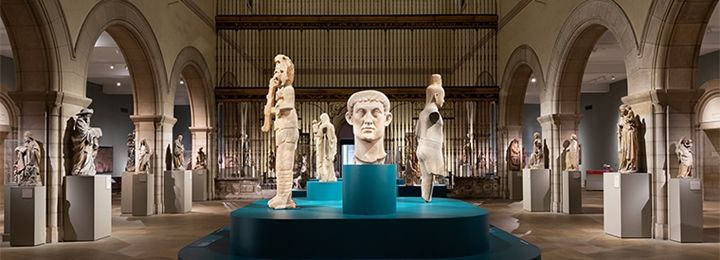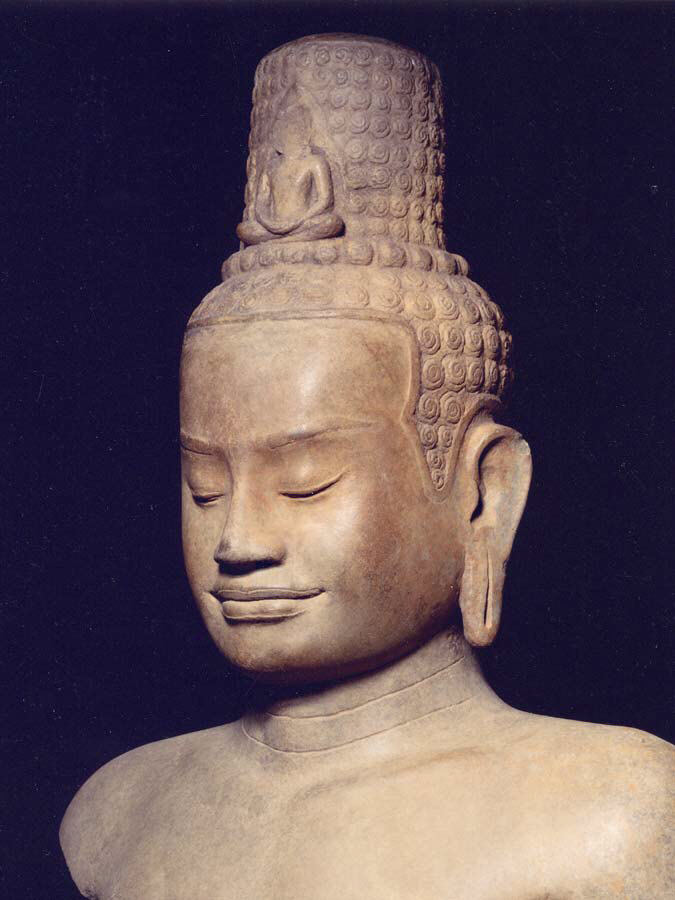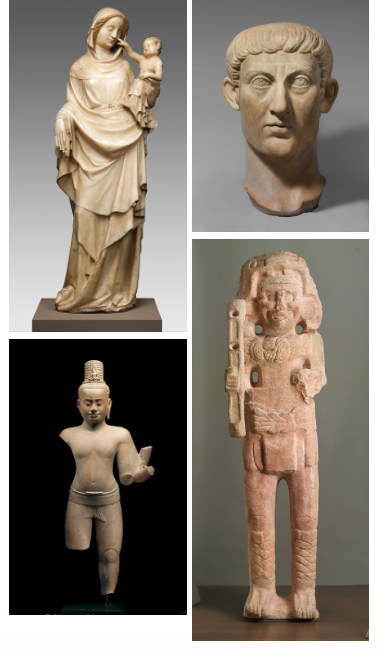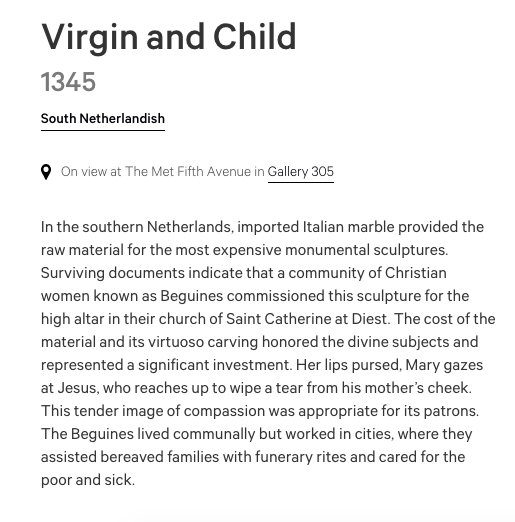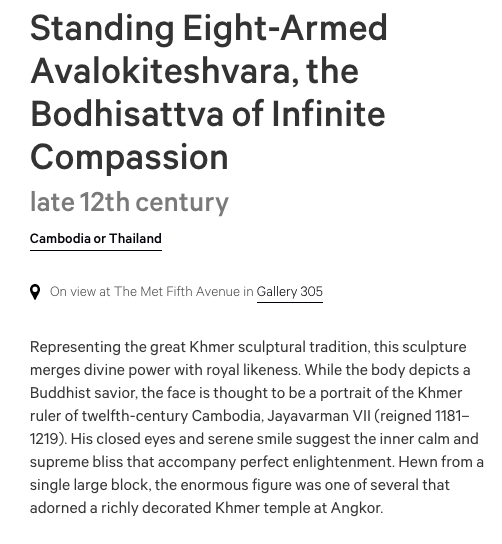The @metmuseum& #39;s new installation, "Crossroads," is a master class in using your looted antiquities to justify keeping your looted antiquities. A short thread.
The exhibit "examine[s] the idea of cultural interconnectedness" by telling "thought-provoking stories about shared ideas and artistic forms from around the world, presenting the global history of humankind as a narrative of intersections and exchange": https://www.metmuseum.org/exhibitions/listings/2020/crossroads">https://www.metmuseum.org/exhibitio...
One section, "Power and Piety," brings together art from premodern Asia, the Americas, Africa, and Europe - "regions at times connected by trade, diplomacy, and war" to see how these cultures shared similar traits in representations of authority: https://www.metmuseum.org/exhibitions/listings/2020/crossroads/power-and-piety">https://www.metmuseum.org/exhibitio...
The section brings together Maya, Khmer, Roman, and European sculptures that "assert a connection between the human and the divine." Let& #39;s look at that Cambodian sculpture, shall we? @Terressa_Davis @ChasingAphrodit @ARCA_artcrime
It& #39;s a c. 12th c Buddha with portrait features of a ruler. Notice his lack of feet? Yeah, that& #39;s pretty common for sculptures hacked out of Angkor Wat. https://www.metmuseum.org/art/collection/search/51302">https://www.metmuseum.org/art/colle...
The sculpture was donated to the Met by a man who purchased it from Douglas A. J. Latchford, a notorious antiquities looter and smuggler who was indicted in NY in 2019 for doing so: https://twitter.com/Diplomat_APAC/status/1297662399990784001?s=20">https://twitter.com/Diplomat_...
In 2013, the Met had to give back looted Cambodian sculptures: https://www.dw.com/en/met-returns-looted-statues-to-cambodia/a-16917307.">https://www.dw.com/en/met-re... Guess they haven& #39;t decided to do any more poking around in their collection records...
Oh, did I mention that Latchford is the one who donated those other Cambodian sculptures the Met had to repatriate? https://itsartlaw.org/2013/02/23/repatriation-of-cambodian-art-sheds-light-on-antiquities-trade/">https://itsartlaw.org/2013/02/2...
The Crossroads exhibit also features a Tibetan sacred object with no provenance info pre-2016 ( https://www.metmuseum.org/art/collection/search/697341)">https://www.metmuseum.org/art/colle... and a monumental Mayan sculpture that was in the US by 1966 ( https://www.metmuseum.org/art/collection/search/309404),">https://www.metmuseum.org/art/colle... but given the state of looting/illegal export of those...
Yes, the Met can, as the exhibition boasts, present "a network of crossroads, among places, eras, and cultures" - but it does so by keeping art that was taken from these places without their consent.
The display text repeats many thoughts from arguments about the value of "universal museums" - the "we want one of everything" model. See, e.g., the notorious 2004 "Declaration on the Importance and Value of Universal Museums": https://www.hermitagemuseum.org/wps/portal/hermitage/news/news-item/news/1999_2013/hm11_1_93/">https://www.hermitagemuseum.org/wps/porta...
The Declaration protests that "[t]oday we are especially sensitive to the subject of a work& #39;s original context, but we should not lose sight of the fact that museums too provide a valid and valuable context for objects that were long ago displaced from their original source."
The Met& #39;s then director signed the Declaration, and the Crossroads exhibit continues its ideas and conclusions - that if you won the race to "collect them all!" you get to keep them: https://www.frieze.com/article/looted-art-and-universal-museum-can-21st-century-collections-ever-escape-colonialisms">https://www.frieze.com/article/l... @rafiazakaria
For me, the contrast in the information on the object labels is enough to show that collecting looted objects destroys our knowledge of the past. Here& #39;s what they can know about the well-documented European sculpture ( https://www.metmuseum.org/art/collection/search/466582).">https://www.metmuseum.org/art/colle...
Compare that richly detailed, specific history with the jumble of guesses and comparisons you have to be content with for a looted antiquity. "We guess it came from a building and looks kinda both like the Buddha and this one other dude?"
(Also, why are you labeling it as "Cambodia or Thailand" when you also claim it came from Angkor?!? My lawyer brain reads this as a move to cloud repatriation claims, since a US court has to think it knows the exact source country before it will order a return.)
Tagging some others who might be interested in the #DouglasLatchford update: @ChiuAngelaS @seaarch @DrDonnaYates @OpenLinkArtData @poetryinstone @CombatLooting @cambodiadaily

 Read on Twitter
Read on Twitter